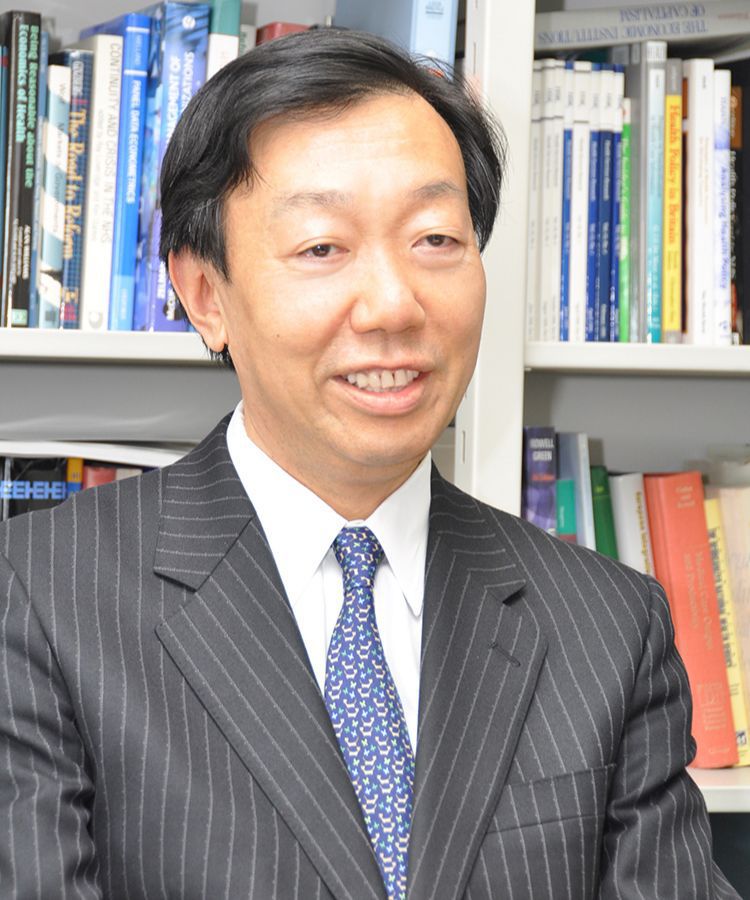“Social Security Reform for All Generations” to contain the increased burden of an aging society and address the declining birthrate.

The combination of a declining birthrate and an aging population is a major issue in developed countries. In Japan, where the two trends arose sooner than elsewhere, social security is an area urgently in need of reform. While Japan boasts a world-acclaimed system that includes universal healthcare, by which all citizens gain reliable access to medical care, the number of the system’s beneficiaries has grown in recent years due to the graying of society. By contrast, the number of contributors to the system has decreased, thus steadily increasing the burden on younger generations.
In response to the issue, in December 2020, three months after the Suga administration’s inauguration, the government released its final report on “Social Security Reform for All Generations,” spelling out reforms that show its determination to address challenging issues that have thus far proven too difficult to overcome. By reforming the current social security structure, under which the benefits are provided mainly to the elderly, with the working generation taking on the burden, the government aims to create a system where people of all generations support each other equally.
Gakushuin University Professor of Economics ENDO Hisao, an expert involved in formulating the reform policy, says, “It’s very significant that the final report clearly demonstrates that the government—while asking people with the financial wherewithal to bear the burden—is responsible for offering security to those people who are truly struggling, regardless of their generation.” The healthcare reforms will raise the patient’s copayment ratio for medical care expenses borne by seniors of 75 or older, and who earn above a certain level of income, from the current 10% of the total to 20%, in the aim of reducing the national medical care expenditures devoted to the elderly.

Professor ENDO Hisao in the faculty of economics at Gakushuin University (Tokyo), and a specialist in social security and health economics. He has held various key public positions, including president of the Japan Health Economics Association, president of the National Institute of Population and Social Security Research, and chairman of the Social Security Council. Since 2019, he has served as a member of the Council on Social Security Reform for All Generations.
The reforms will also involve reducing the concentration of patients at large hospitals, and such measures will help create a system that optimizes medical resources. As for measures dealing with the declining birthrate and childcare assistance, the reforms incorporate a number of actions, such as expanding insurance coverage include fertility treatment, establishing more day nurseries and childcare facilities, and encouraging men to take paternity leave.
Above all, measures to deal with the declining birthrate are of great importance, since they form the basis for not only maintaining the social security system but also keeping the economy growing. Professor Endo says, “We absolutely must avoid producing an atmosphere that may coerce people to have children. We should continue with policies that create an environment where young people who want children can fulfill their hopes.” The government’s assistance in funding fertility treatment has gradually led to an increase in the number of children born thereby. According to the Japan Society of Obstetrics and Gynecology, approximately 6% of all births nationwide were assisted by in-vitro fertilization in 2018.
With the treatment to be covered by insurance, not only will the financial burden be further reduced, but more medical institutions will offer fertility treatment, thus making it more accessible. The resulting benefits will be numerous, including progress in developing more effective and safer technology. The policy of insurance coverage for fertility treatment symbolizes the Japanese government’s commitment to fully supporting young people who want to have and raise children.
Professor Endo says, “Two decades from now, the children who were born today will be supporting our society. Though we need to be patient enough to wait until we see the outcome of those policies, we must implement them now.” Having worked out forward-looking reforms, Japan will continue to review and enhance them while moving ahead to guide the country into becoming a truly affluent society in the future.






























